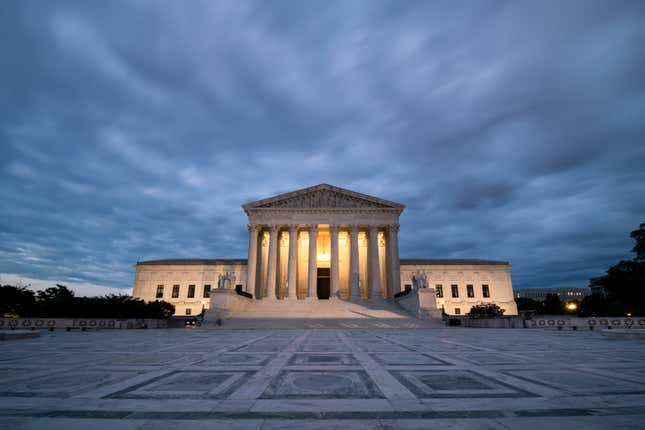Supreme Court’s Affirmative Action Case Relies on Myths About Asian-Americans
The "model minority" myth has always allowed racist institutions to pit a specific, high-achieving class of Asian-Americans against all other people of color.
Politics

The Supreme Court announced Monday that it will revisit the issue of affirmative action for the first time since 2016. This time, the court will decide whether race-conscious admissions programs at Harvard and the University of North Carolina are lawful, as the two cases specifically take issue with the universities’ alleged “discrimination” against Asian-American students.
Both cases, Students for Fair Admissions v. President & Fellows of Harvard College and Students for Fair Admissions v. University of North Carolina, were originally filed in 2014 by the conservative activist group Students for Fair Admissions, which manipulated admissions statistics to argue that Harvard and UNC hold Asian-American applicants to higher standards than their non-Asian counterparts. After decades of failing to prove that diversity programs in schools hurt white students, by the 2010s, conservative legal activists pivoted to arguing that affirmative action actually hurts Asian students, in an effort to get rid of it altogether.
The subject matter of the cases before SCOTUS today unfortunately isn’t new: For years now, faux concern for Asian-American students has been used by conservatives to challenge affirmative action programs and conceal their racist motives. And despite how many Asian students at Harvard and other schools have always fought back against these narratives, their voices are consistently written out of mainstream coverage of the issue.
Still, there’s something particularly jarring about SCOTUS taking up affirmative action cases alleging anti-Asian racism less than a year after #StopAsianHate activism gained national attention, in response to a rise in attacks targeting Asian Americans, including the Atlanta massage parlor shooting that killed eight last March. Today, the Supreme Court’s supposed concern for Asian-American students reflects continued misunderstanding about the diversity of Asian communities, and the disappointing limitations of #StopAsianHate.
Throughout last year, as coverage of anti-Asian racism fixated on traumatizing footage of violent, physical attacks on mostly elderly, East Asian people, the emergence of #StopAsianHate reduced anti-Asian racism to individual acts of interpersonal, “senseless” violence. The implicit message was that these attacks were somehow separable from greater issues of white supremacy, the continued legacy of military imperialism across the Pacific, and other systemic issues, like a steadily growing gentrification crisis in low-income Asian communities, or xenophobic immigration policies that have rendered Southeast Asian refugees among the most likely to be deported.
-

-

-

-

-

-

-

-

-

-

-

-

-

-

-

-

-

-

-

-

-

-

-

-

-

-

-

-

-

-

-

-

-

-

-

-

-

-

-

-








































